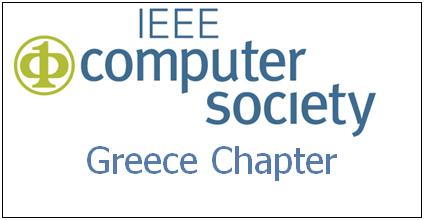

 |
The Third International Conference on Sensor Technologies and Applications SENSORCOMM 2009 June 18-23, 2009 - Athens/Glyfada, Greece |
|
|||||||||||
| Details: |
|
Authors of selected papers will be invited to submit extended versions to a IARIA Journal |
All tracks/topics are open to both research and industry contributions.
Tracks:
APASN: Architectures, protocols and algorithms of sensor networks
Network planning, provisioning and deployment; Network Architectures for Sensor Networks; Network Protocols for Sensor Networks; Structural design; Distributed Sensor Networks; Dynamic sensor networks; Scalable and heterogeneous architectures; Hierarchical clustering architectures; Group-based Architectures; Network topologies; Mesh networking; Device centric sensor networks; Distributed coordination algorithms; Topology construction; Routing protocols; Routing Metrics; Distributed Algorithms; Attribute-based named nets; Mobility and Scalability; Attribute-based named Sensor Networks; Query optimization; Self-organization and self-configuration algorithms; Reconfigurability; Time Synchronization; MAC protocols for sensor networks (801.11, 802.15.4, UWB, etc); Location and time service; Integration with other systems; Distributed inference and fusion; Cross-layer design and optimization; Complexity analysis of algorithms; Sensor networks and the Web; Integration with other systems (e.g., Web-based information systems, process control, enterprise software, etc.); Target tracking; RFID tags; Traffic scheduling
MECSN: Energy, management and control of sensor networks
Energy models; Energy optimization; Energy management; Power-aware and energy-efficient design; Power sources in sensor networks; Battery technology; Power management; Algorithms and theories for management; Communication strategies for topology control; Algorithms and theories for supervisory control; Sensor tasking and control; Distributed control and actuation; Location and mobility management; Bandwidth management; Distributed networked sensing; Resource provisioning; Resource management and dynamic resource management; Schemes to maximize accuracy and minimize false alarms; Online self-calibration and self-testing; Handoff and mobility management and seamless internetworking; Distributed actuation and control; Topology control
RASQOFT: Resource allocation, services, QoS and fault tolerance in sensor networks
Algorithms to support quality of service in sensor networks; Protocols to support quality of service in sensor networks; QoS/SLA in sensor networks; Provisioning of QoS in terms of bandwidth and delay assurance; System services and distributed services in sensor networks; Delay tolerant networks and opportunistic networking; Failure resilience and fault isolation; Information assurance in sensor networks; Fault tolerance and reliability; Admission control; Resource allocation and fairness; Real-time resource scheduling; Scheduling and optimisation; Capacity planning
PESMOSN: Performance, simulation and modelling of sensor networks
Performance measurement of sensor networks; Performance evaluation and analysis of sensor networks; Performance comparison on capacity, coverage and connectivity; Modelling techniques of sensor networks; Validation of sensor network architectures; Simulation and theoretical analysis; Simulation software tools and environments; Theoretical performance analysis: complexity, correctness and scalability; Design, simulation and optimization tools for deployment and operation; Platform modelling and analysis tools; Analytical, mobility and validation models; System debugging and testing
SEMOSN: Security and monitoring of sensor networks
Security and privacy in sensor networks; Reliability aspects in sensor networks; Monitoring distributed sensor networks; Mechanisms for authentication; Secure communication in sensor networks; Encryption algorithms for sensor networks; Sensor secure management; Data integrity; Trustworthiness issues in sensor networks; Trade-off analysis
SECSED: Sensor circuits and sensor devices
Methods for sensor deployment; Instrumentation and models for deployment of sensors networks; Sensor architecture; Abstractions for modular design; Design and deployment of embedded system platforms; Embedded architectures and tools; Embedded processors; Embedded chip design; Micro and Nano devices; Biosensors; Optical sensors; Smart sensors; Acoustic Sensors; Microwave sensors; Middleware design; Sensor Prototypes; Sensor node components; Sensor interfaces; Actuators; Independent Component Analysis; Design of cost effective and economical sensors; Smart Material Applications to design sensors; Microfabrication Technologies for Microsystem Integration; Integration of sensors into engineered systems; Hardware platforms; Test-beds incorporating multiple sensors; Operating system and middleware support
RIWISN: Radio issues in wireless sensor networks
Wireless Sensor Communications; Network connectivity & longevity; Tracking objects; Geo-location problems; Network coverage; Algorithms for sensor localization and tracking; Detection, classification and estimation; Physical layer impact on higher level protocols; Directional and smart antennas for sensor networks; Coverage maintenance; Transceiver and antenna design; Ubiquitous wireless connectivity
SAPSN: Software, applications and programming of sensor networks
Applications and demonstrations of sensor networks; Software platforms and development tools; Architectural design and optimization tools for sensor nodes; Computation and programming models of sensor networks; Languages and operating systems of Sensors; Programming and Interfacing; Programming abstraction; Programming models for sensors; Programming methodology for sensor environments; Intelligent sensor theory and applications; Machine learning applications to sensor networks; Wireless sensor applications; Applications for sensor network management; Software tools for chip programming; Application requirements; Application evaluation and comparison; Demos and prototype testing
DAIPSN: Data allocation and information in sensor networks
Techniques for the interpretation and use of sensor data in decision-making processes; Distributed data processing; Distributed signal processing; Array signal processing; Statistical signal processing; Distributed query processing; Distributed information processing; Distributed algorithms for collaborative information and signal processing; Task allocation, reprogramming and reconfiguration; Coding and information theory; In-network processing and aggregation; Data analysis and visualisation; Data storage in sensor networks; Data retrieval; Data dissemination; Data compression and aggregation; Data transport in wireless sensor networks; Data gathering and fusion in wireless sensor networks; Theories and models on fundamental information and communication aspects of sensor networks; Redundancy
DISN: Deployments and implementations of sensor networks
Methods for sensor networks deployment; Practical implementations and real-world experiences; Real-life deployments; System implementation; End-user aspects; Operational experience and test-beds; Industrial and commercial developments and applications; Measurements from experimental systems, test-beds and demonstrations; Intelligent sensors, body sensors and their utilisation; Analysis of real-world systems and fundamental limits; Smart Sensors for building surveillance; Sensing in health care; Games using sensor networks; Peer-to-peer, overlay, and content distribution wireless sensor networks; Use cases (e.g., Automotive, Battlefield, Defense, Construction, Disaster recovery, Environmental, Medical, Security, Biomedical, Unmanned Aerial Vehicles, etc.); Sensor networks for Rural and Agricultural environments; Sensors for railway systems; Pattern Recognition; Machine Intelligence; Sensor-equipped Smart Environment; Deployments in Harsh Environments; Potential application areas
UNWAT: Under water sensors and systems
Protocols for underwater sensor networks; Underwater hardware; Underwater wired systems; Underwater wireless sensor networks; Underwater sensors for neutrino telescopes; Acoustic and radio underwater communication; Aquatic environments and applications; Unmanned underwater exploration; Underwater localization and knowledge acquisition; Scalable underwater monitoring and measurement systems; Fixed and mobile underwater wireless sensors; Aquatic surveillance applications; QoS/Performance in underwater communication; Surface-floating and underwater sensor communication; Access control in underwater networks; Latency effects for critical applications and synchronization; Synchronization and delays in underwater sensor networks; Localization in underwater sensor networks; Advanced underwater sensor-based applications
ENOPT: Energy optimization in wireless sensor networks
Energy supply, lifetime and transmission power; Energy efficiency; State-driven energy optimization; Power consumption models; Energy-aware adaptive low power; Optimal energy-aware clustering; Lifetime-oriented energy provisioning; Sensor placement and accessibility; Random sensor deployment and density function; Fixed and adjustable transmission power; Traffic and energy consumption rate; Energy-efficient topology control; Energy optimization in multi-hop communications; Energy harvesting for autonomous sensors




